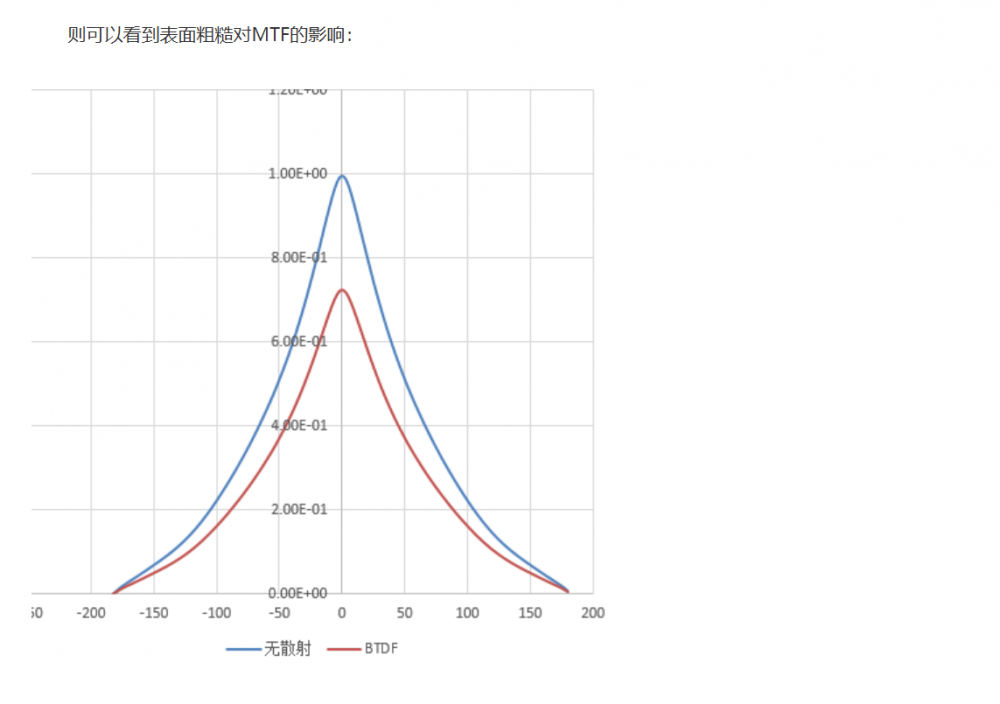描述FRED可以计算一个给定系统的MTF,本教程解释了如何来实现这个功能。
建立系统这篇文章中我们所使用的系统是一个简单的透镜,将光聚集到附着在几何面的分析面上。透镜是一个简单的双凸BK7单透镜,参数为r1=60 mm, r2=-300 mm, ct=4 mm, x semi-aperture=10, y semi-aperture=10,该透镜的像平面位于近轴焦点处。


演算为了充分采样透镜的空间频率直到截止频率,分析面的最小半宽需满足以下要求:

在这个等式中变量定义如下:• Nx == number of pixels in the analysis plane for the irradiance spread function (PSF)(分析面的像素数用于照度分布函数)• w == half width of the analysis plane for the irradiance spread function (PSF)(分析面的半宽度用于照度分析函数)• Δx == pixel size in lens units(透镜的像素大小单位)= 2w/Nx • Nf == number of pixels in the transform grid(在转换网格中的像素数);• the transform grid must have 2n x 2n pixels(转换网格一定要有2n x 2n个像素) (i.e. ...16, 32 , 64, 128, 256, 512, ...)• FRED automatically sizes the transform grid so that it is 2n x 2n. Its size is the smallest grid for which Nf is greater than or equal to Nx(FRED自动规定转换网格的尺寸保证它的大小为2n x 2n。它的大小是最小的网格,Nf应大于等于Nx)• if Nx = 127, then FRED makes Nf = 128(如果Nx=127,FRED就将Nf 设置为128)• if Nx = 128, then FRED makes Nf = 128• if Nx = 129, then FRED makes Nf = 256• Δf == pixel size in 1/lens units (1个透镜单元的像素大小)= 1/(Nf*Dx)• λ == wavelength in lens units(透镜单元的波长)• F == focal length(焦距)• D == entrance pupil diameter(入瞳直径)比较在下图中:透镜EPD=10mm截止频率=184lp/mm图像平面网格=128*128像素,在X和Y方向上的全宽度为0.348mm*0.348mm。








